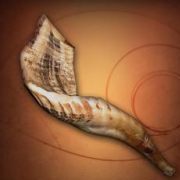The 24 Elders of Revelation, Part 5: The Double Sacrifice
The 24 Elders of Revelation, Part 5: The Double Sacrifice
The subject of this blog series is the 24 Elders in heaven that John foresaw in Revelation 4 - 5, having victors’ crowns on their heads. Which elders will not be any of those who will be resurrected and who will ascend to heaven at Christ’s Parousia; because all these will still be the “eagerly awaiting” ones referred to in Hebrews 9:28:
…Christ, having been offered once for to bear the sins of many, will appear ek/out of the heavenly sanctuary (9:7-12) a SECOND time unto those eagerly awaiting Him for their salvation.
In the context of Hebrews 9, verse 28 is His coming out of the heavenly sanctuary after His SECOND offering “for the people”: that of His Adamic nature. Heb. 9:7; Lev. 16:15 His FIRST offering, as with Aaron in the earthly sanctuary each Day of Atonement on Tishri 10, was “for Himself and for His house.” Heb. 3:6; 9:7, 12; Lev. 16:11, 29 For there are two priestly houses: one of Aaron, and one of Christ. These are the earthly and heavenly priesthoods originally named after Aaron and Melchizedek, respectively; things fully explained in Hebrews 5 – 8.
Here are the essentials of the Aaronic atonement ritual:
Leviticus 16:11 [First offering:] “And Aaron shall bring the bull of the sin offering, which is for himself, and make atonement for himself and for his house, and shall kill the bull of the sin offering which is for himself. … 15 [Second offering:] Then he shall kill the goat of the sin offering, which is for the people, and bring its blood within the veil, and do with that blood as he did with the blood of the bull, and sprinkle it upon the mercy seat and before the mercy seat. … 29 … In the 7th month, on the 10th day of the month…”
Among the ancient cultures of the Mosaic era, a powerful bull represented godlike authority. (Pictographs from ancient times commonly portrayed gods with bulls heads, and/or bull horns.)
In contrast, a sacrifice from the flock represented the frailty of mortal men.
In the heavenly sanctuary, Christ is able to fulfill by Himself, for all time, this required double sacrifice, because He uniquely has TWO natures, Divine and Adamic. Here are the essentials of the heavenly atonement ritual:
Hebrews 9:11 But Christ came as High Priest of the good things to come, by a greater and more perfect tabernacle not made with hands, that is, not of this creation, 12 nor by the blood of goats and calves, but by [First offering:] His own blood He entered the holy places ephapax/on one occasion, having obtained (for) Himself* eternal redemption. … 24 For Christ has not entered into [earthly] holy places made with hands, which are anti-types of the true; but into heaven itself, [Second offering:] now to appear in the presence of God for us… 28 So Christ, having been offered apax/once for to bear the sins of many, will appear ek/out of the heavenly sanctuary A SECOND TIME unto those eagerly awaiting Him for their salvation. *Aorist participle, middle/reflexive voice.
Jesus appears as the Slain Lamb in Revelation 5 to represent the whole of His sacrifices “for Himself and for the people.” For this Lamb hearkens back to His original archetypal “lamb” sacrifice nearly 2000 years ago at Passover, being “the Lamb slain from the foundation of the world.” Rev. 13:8 However, God required that original sacrificial work to be continued by means of the heavenly bull-type and goat-type double sacrifice in the heavenly sanctuary. This additional work is required because “the sins of the world” that were fully laid upon Jesus (John 1:29; 1 John 2:2; Isaiah 53:6) must be completely expiated, so that both He and we can be everlastingly separated from them. Therefore, God has provided a way whereby those sins will be transferred to and carried off by another. This will be explained in Part 6.



0 Comments
Recommended Comments
There are no comments to display.